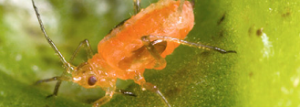Sampling > Sequential Sampling
What is Sequential Sampling?

This method is designed for two clear choices. For example:
- Is the heat in a system above or below a critical level? Heat is measured in one part of the system to see if it has reached the critical level. If the heat is close to the critical level, but not over it, resample and repeat the calculations.
- Should I spray pesticide or not? Pests could be counted on a plant. If there are a large number of pests, spray pesticide. If there are a small number of pests, do not spray pesticide. If there are a middling number of pests, sample another plant.
Sequential samples can either be:
- Item-by-item: one sample at a time.
- Group: sample sizes of two or more.
In order to use this method, you must be able to sample serially. If you have to choose all of your sample items at the same time, you should choose another sampling method (like simple random sampling or a non probability sampling method).
Three Outcomes
With traditional sampling methods, a hypothesis test has one of two possible results: you either reject the null hypothesis, or you do not. With sequential sampling, you have three possibilities:
- Reject the null hypothesis (end the experiment),
- Do not reject the null hypothesis (end the experiment),
- Fail to draw any conclusion (draw another sample and repeat the test).
Time-Sequential Sampling
In this variant, sometimes called time-sequential classification, you use time as your sampling frame instead of a physical population to sample from. For example, you might choose a sample member at 24-hour intervals.
Advantages and Disadvantages
Although it sounds like the process could go on and on forever, sequential sampling usually ends up with smaller samples than traditional (set size) sampling. However, the mathematics needed to analyze data for sequential sampling is much more complex and the procedure is generally more time consuming (and can be more expensive) than fixed-size sampling. Computers are often required to develop sequential sampling plans. To simplify the process, many fields have developed sampling plans based on the Poisson distribution, negative binomial distributions and others to maximize efficiency. For example, Pedigo and Buntin (1993, p.578) list dozens of plans for different agricultural arthropods.
Next: Sequential Probability Ratio Test
References:
Krebs, C. (2014). Ecological Methodology. 3rd. Ed.
Pedigo, L. & Buntin, G. (1992). Handbook of Sampling Methods for Arthropods in Agriculture. CRC Press.